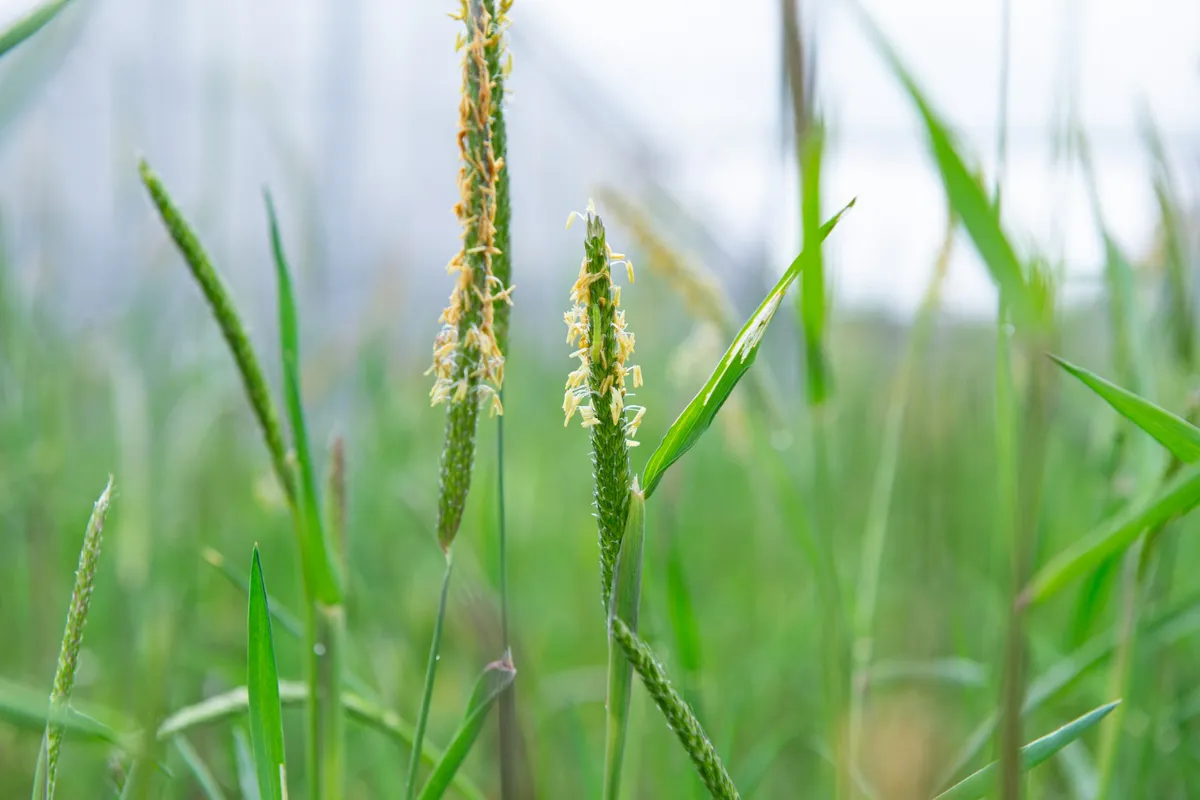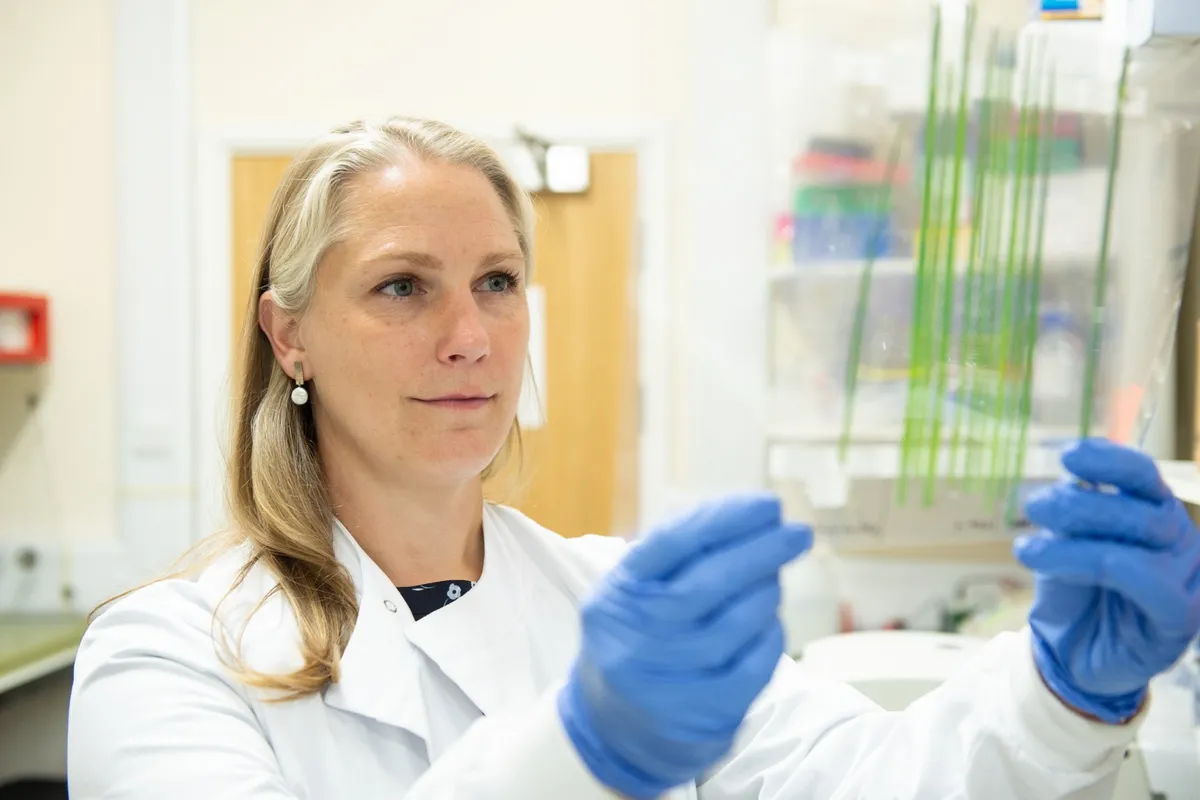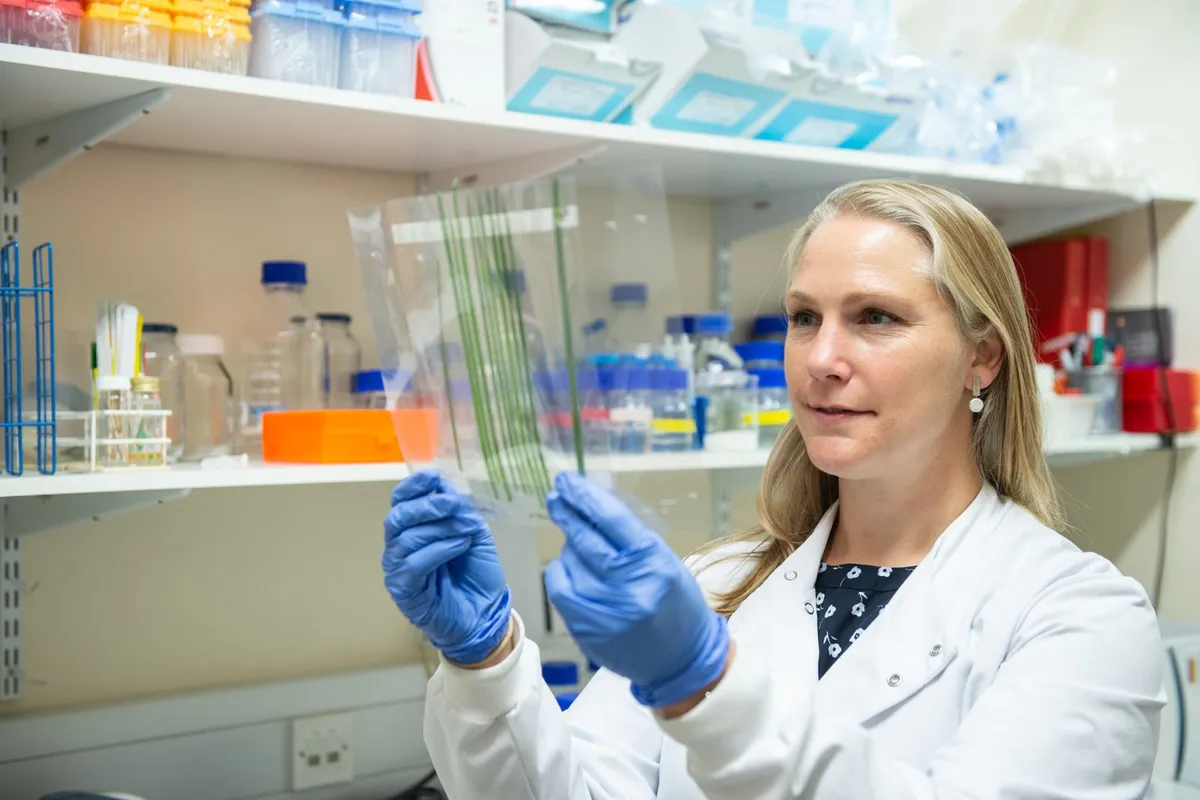Next time you are taking a summertime stroll in the countryside and pass a field full of arable crops, crouch down a bit and get your eyes level with heads of wheat or barley. Can you see a clutch of spindly purplish grass flowers poking up above the other plants? If the answer is yes, you are probably looking at a blackgrass infestation – a nightmare for famers on tight margins, and a puzzle for scientists looking for ways to control it.
Blackgrass: What's the problem?
Blackgrass is one of the most problematic and damaging agricultural weeds for winter wheat in Western Europe. Severe infestations can result in yield loses of up to 70%, squeezing farm productivity and ultimately imperilling our food security. It costs UK farmers around £400 million per year and as few as 12 plants per square metre could reduce crop yield by 5%.
Blackgrass costs UK farmers around £400 million per year.
Numerous methods of control have been tried, but blackgrass almost always bounces back. It is swift to develop resistance to pesticides. Changes to crop management, such as varying planting times, may hold off encroachment for a while, but the ever-adaptable weed soon finds a way back and its lifecycle is now so perfectly aligned to the way we farm, that its incidence is spreading.

Blackgrass thrives on heavy land, particularly where drainage is poor. About 80% of seeds germinate in the autumn and each plant can produce on average 2 to 20 heads with approximately 100 seeds per head – meaning just one survivor can become a significant burden in a very short time. On some farms, growers have had to adopt dramatic shifts to their rotations, cultivations and even introduce fundamental land use changes to get on top of the weed.
- Guide to the farming calendar: a year in the life of a British farmer
- British lambing guide: when is the lambing season and best places to see lambs
- John Craven: Does the future of farming lie in mimicking nature?
In 2014 the weed reached epidemic levels. Whilst the problem had been emerging for a number of years, it became clear that it had become resistant to most of the chemicals being used to treat it. To compound the problem, regulators were putting pressure on the agricultural industry to limit the use of herbicides. As a result, blackgrass grew out of control in many areas.
Urgent action is now needed if the crisis is not to be repeated. A recent study looking at a worst-case scenario where there is a total loss of herbicide control in UK fields, showed that this could result in an annual cost to farmers of £1 billion, with a wheat yield loss of 3.4 million tonnes per year. This could cripple our home-grown cereals production.

How to control blackgrass: The surveillance society
Step one in better control would be better monitoring. Out in the UK’s wheat fields scientists from Rothamsted Research, Britain’s oldest agricultural research institute, are getting to grips with problem. The institute and its partners have been mapping blackgrass across the UK since the watershed of 2014. Assisted by a network of over 60 citizen scientist farmers, the team have developed detailed plans of where the weed is thriving and how that relates to on-farm practices.
Until recently this was a painstaking process – responding to farmer tip-offs by tramping through fields and physically counting blackgrass plants. But all that is about to change. Using drones and farm machinery equipped with sophisticated visioning technology, the team believe they are close to being able to pick out the hard-to-spot blackgrass spikes automatically.
“This could give us fast, real time data on how the plants are spreading and where they’re surviving current management,” says Rothamsted weed ecologist Dr David Comont. “Combining this with AI based number crunching, we hope that new management strategies for control can be rapidly developed.”
- Guide to British cattle breeds: common cow breeds and how to recognise them
- Native British sheep breeds and how to recognise them
- Native British pig breeds and how to recognise them

Smart spraying
Even if blackgrass patches can be identified, however, that still leaves the problem of removal.
The common herbicide glyphosate is often used for this, but there are signs that the plants are beginning to adapt to counter this last line of defence. Not only that, but widespread autumn spraying has also led to many blackgrass populations evolving to germinate later, more closely synchronising its lifecycle with that of winter wheat.

So new forms of in-field control are urgently needed - and smart spraying may be one option. A team of experts partnering Rothamsted with private sector agri-tech, are using precision farming technology and artificial intelligence to tackle the problem. Sophisticated camera technology and software, combined with innovative boom sprayers can detect, identify and map blackgrass at different growth stages within cereal crops across a farm. The information can be used to map infield populations so that integrated weed management plans can be developed.
The project is still in its infancy, but the team hope that it could result in reduced herbicide volumes being sprayed in-field. This would minimise unintended direct consequences on other organisms and reduce the potential for leaching into other vulnerable ecosystems, such as waterways.
“Developing “smarter” systems which can automatically monitor and more precisely spray this weed has the potential to maximise control,” says Comont. “If we can reduce herbicide use and costs to farmers, that will be a major step forward.”

A shape-shifting adversary
Away from control strategies in the field, blackgrass presents lab-based researchers with an intriguing challenge. The fact that blackgrass is so highly adaptable in farming systems makes it hard to devise reliable methods of controlling it. However, this same adaptability may also shed light on how we can make our crops more resilient – particularly as our climate shifts.
“We need to figure out what we can learn from blackgrass,” says geneticist Dr Dana MacGregor at Rothamsted Research. “If we want to future-proof our crops, studying how weeds deal with new stresses like a changing climate or altered cropping patterns, could help us to identify new or useful traits that aren’t currently present in our highly-bred crops.”

MacGregor has been delving into genome of blackgrass, and she and her collaborators recently made an extraordinary breakthrough. They discovered that the weed has tiny circles of DNA outside of its main chromosomes. These evolve separately from the genetic material in the nucleus and the genes for herbicide resistance appear to be encoded in this extra-chromosomal circular DNA. This may give the plant a fast-track solution for evolution, accelerating its ability to adapt to new circumstances.
“If we can harness some of this plasticity, our options for rapidly developing climate resistant strains of major crops could massively expand,” says MacGregor.
The research team are also looking at why blackgrass does so much better than wheat when under pressure from environmental factors like flooding. The weed seems to be specifically designed to overcome waterlogged soil, outperforming the stricken cereal crops around it.
The fact that blackgrass is so highly adaptable in farming systems makes it hard to devise reliable methods of controlling it. However, this same adaptability may also shed light on how we can make our crops more resilient – particularly as our climate shifts.
It has been known for many years that blackgrass patches are linked to water-retaining soils, but it wasn’t clear what specific adaptations to these conditions the plant had. So, the team conducted pot-based waterlogging experiments comparing wheat and blackgrass. They found that waterlogged blackgrass grew better than wheat above ground, whilst its roots held tissue containing air spaces, similar to that found in many aquatic plants. On the other hand, when wheat is waterlogged, it has to create similar air spaces by renovating its roots, which takes time and energy. In other words, blackgrass is “ready to go” when fields are flooded, whilst wheat and other crops must make changes to survive.
“We have looked at the metabolic and genetic basis for these traits,” says MacGregor. “If we get more extreme weather events, then we need crops that can respond. This knowledge could be invaluable.”
“Blackgrass remains a potent threat to food security, but rather than just studying it as a plant that fails to die in response to herbicide application, we are bringing it into the labs to better understand what makes it so resilient and why it is able to survive the barrage of human and natural pressures it faces.”
Words: James Clarke, Director of Communications and Engagement at Rothamsted Research. Main image credit: Rothamsted Research.
